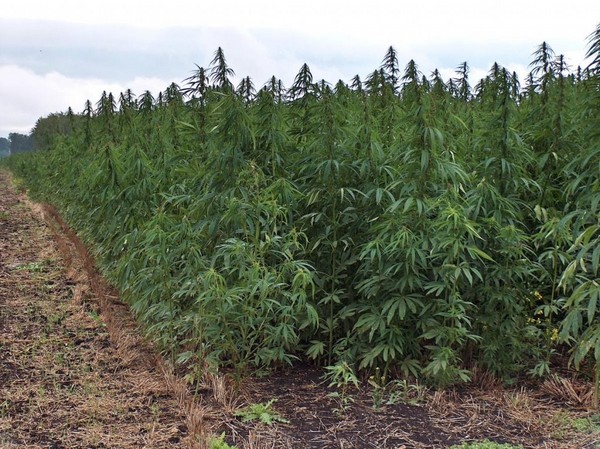Truth Seeker
New Member
Rising demand and good returns will see more acres devoted to industrial hemp production in Western Canada this spring, according to industry participants.
Canadian hemp plantings have risen steadily over the past few years, with about 55,000 acres licensed in 2012, according to government data.
Due to industrial hemp's association with its cousin marijuana, farmers need to be licensed through Health Canada and pass a criminal record check in order to grow the crop. Testing is also required to confirm levels of THC -- the psychoactive ingredient in marijuana -- are below the allowable 0.3 per cent.
"We're anticipating a 10 to 15 per cent increase (in acres)," said Kim Shukla of the Canadian Hemp Trade Alliance at Steinbach, Man.
Rising demand for the food products was behind rising demand for growing the crop, Shukla said.
"We'll see similar (acres) or a slight increase," said Anndrea Herman, of The Ridge International Cannabis Consulting and president of the Hemp Industries Association.
Licensed acres in Canada could come in as high as 70,000 acres in 2013, but larger gains would come in future years. Most of the current industry is geared toward grain production, but the growth will be in the crop's use for fibre as that demand expands.
"That dynamic will change as we move forward and there's more demand for the fibre component," said Hermann, pointing to a number of international developments, including using hemp fibre for building materials.
On the grain side there is also room to create more demand. Hemp is currently not registered as an animal feed, but chicken feeding trials are underway in Canada. Hermann said hemp was producing comparable results to feeding flaxseed to chickens.
Farmers can expect to bring in $200-$300 per acre gross margin growing hemp, said Hermann, noting those returns compare favourably with other options and only take into account grain production.
"Farmers will only grow something that will be lucrative for them," said Shukla, adding "hemp has proven to be a great rotation option and provide a good return as well."
From a rotational perspective, hemp is a heavy nitrogen user and is best suited following a legume, such as soybeans, said Shukla.
A rising global demand for Canadian-made hemp products, as more countries approve its use as a human food, has helped make it an attractive crop for producers to grow. With hemp production still restricted in the U.S., end users around the world generally look to Canada first for quality hemp seed and products, said Hermann.
While efforts are underway in the U.S. to gain federal approvals for growing hemp, Hermann did not expect U.S. production would be detrimental to Canada's industry if, or when, the country starts growing the crop as well.
"We're not even scratching the surface," she said regarding demand for hemp.

News Hawk- TruthSeekr420 420 MAGAZINE
Source: albertafarmexpress.ca
Author: Phil Franz
Contact: Alberta Express - About
Website: Hemp acres on rise in Canada
Canadian hemp plantings have risen steadily over the past few years, with about 55,000 acres licensed in 2012, according to government data.
Due to industrial hemp's association with its cousin marijuana, farmers need to be licensed through Health Canada and pass a criminal record check in order to grow the crop. Testing is also required to confirm levels of THC -- the psychoactive ingredient in marijuana -- are below the allowable 0.3 per cent.
"We're anticipating a 10 to 15 per cent increase (in acres)," said Kim Shukla of the Canadian Hemp Trade Alliance at Steinbach, Man.
Rising demand for the food products was behind rising demand for growing the crop, Shukla said.
"We'll see similar (acres) or a slight increase," said Anndrea Herman, of The Ridge International Cannabis Consulting and president of the Hemp Industries Association.
Licensed acres in Canada could come in as high as 70,000 acres in 2013, but larger gains would come in future years. Most of the current industry is geared toward grain production, but the growth will be in the crop's use for fibre as that demand expands.
"That dynamic will change as we move forward and there's more demand for the fibre component," said Hermann, pointing to a number of international developments, including using hemp fibre for building materials.
On the grain side there is also room to create more demand. Hemp is currently not registered as an animal feed, but chicken feeding trials are underway in Canada. Hermann said hemp was producing comparable results to feeding flaxseed to chickens.
Farmers can expect to bring in $200-$300 per acre gross margin growing hemp, said Hermann, noting those returns compare favourably with other options and only take into account grain production.
"Farmers will only grow something that will be lucrative for them," said Shukla, adding "hemp has proven to be a great rotation option and provide a good return as well."
From a rotational perspective, hemp is a heavy nitrogen user and is best suited following a legume, such as soybeans, said Shukla.
A rising global demand for Canadian-made hemp products, as more countries approve its use as a human food, has helped make it an attractive crop for producers to grow. With hemp production still restricted in the U.S., end users around the world generally look to Canada first for quality hemp seed and products, said Hermann.
While efforts are underway in the U.S. to gain federal approvals for growing hemp, Hermann did not expect U.S. production would be detrimental to Canada's industry if, or when, the country starts growing the crop as well.
"We're not even scratching the surface," she said regarding demand for hemp.

News Hawk- TruthSeekr420 420 MAGAZINE
Source: albertafarmexpress.ca
Author: Phil Franz
Contact: Alberta Express - About
Website: Hemp acres on rise in Canada


